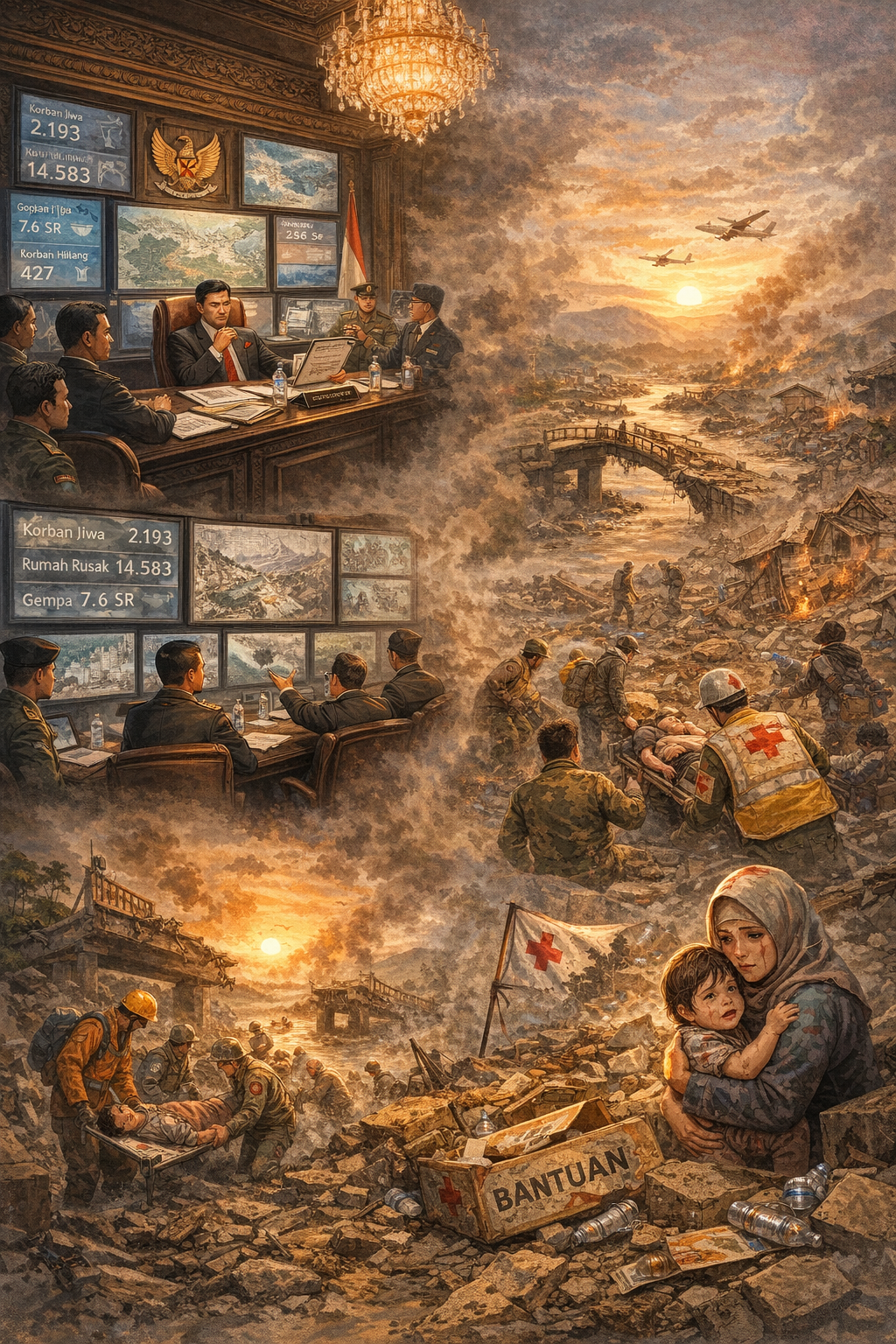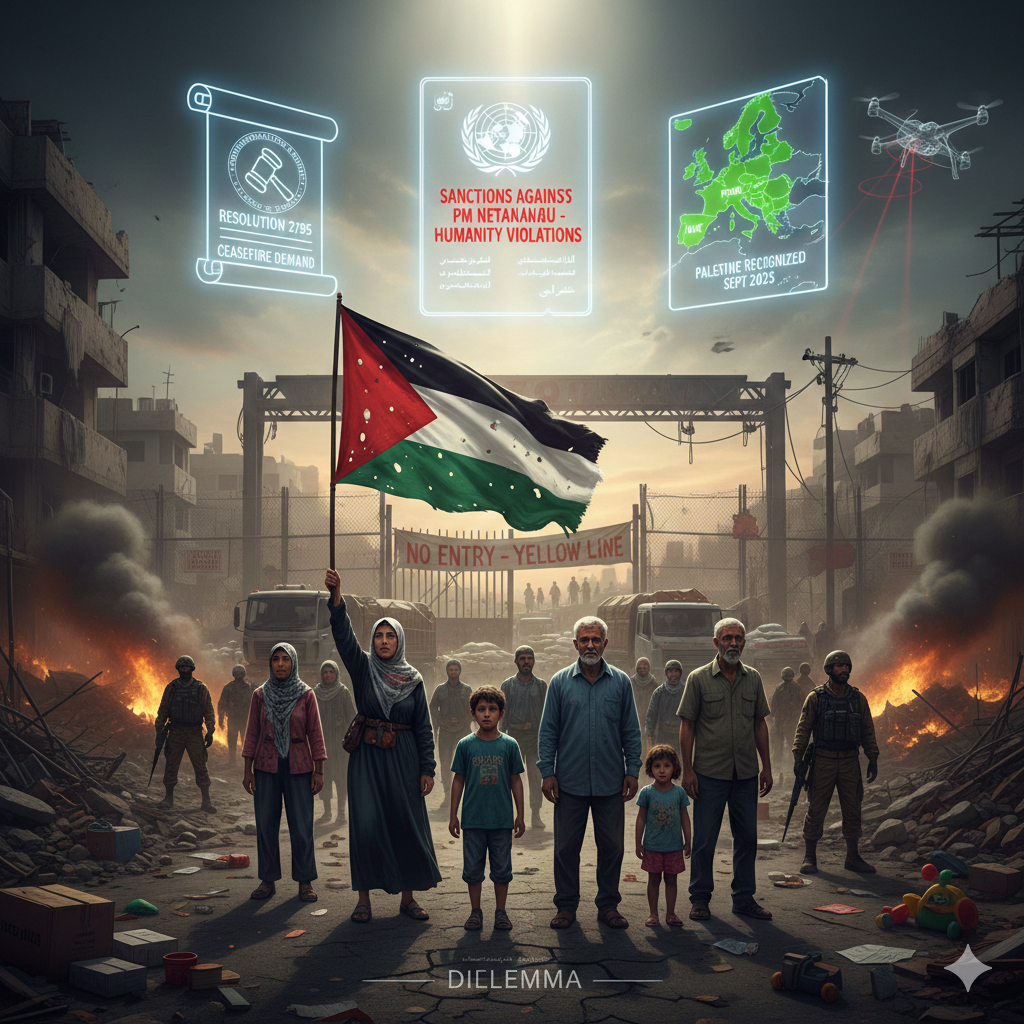Gia Ayu Fita
Universitas Sulawesi Barat
giaayufita@unsulbar.ac.id
Do you remember The Clash of Civilizations theory proposed by Samuel Huntington back in 1993? At that time, the world had just emerged from the shadow of the Cold War, and the United States was riding high on its victory after the fall of the Soviet Union. In that post-Cold War euphoria, Huntington argued that the next global conflicts would not be driven by ideology or economics, but by cultural and religious divisions between major civilizations.¹ But now, more than three decades later, we must ask: does that theory still explain the state of global conflict today? Or are we now drifting in a directionless global disorder where chaos trumps clarity? Contemporary geopolitics suggests that the reality has grown far more complicated and can no longer be reduced to mere clashes between civilizations.
Post-Brexit and a Divided Europe
Take Western Europe, for example. The United Kingdom’s decision to leave the European Union (we called Brexit) was not the result of cultural conflict with neighboring countries. Rather, it reflected growing dissatisfaction with regional economic and political policies.² It was a signal of surging nationalism and anti-globalization sentiment at the heart of liberal civilization itself. Similarly, the rise of far-right parties such as AfD in Germany and PVV in the Netherlands reflects public anxiety about immigration and disillusionment with liberal democracy. These are not cultural clashes, but a crisis of faith in a system once considered the global gold standard.³
Putin, Xi Jinping, and the Challenge to Western Order
Meanwhile, in the East, Russia under Vladimir Putin isn’t waging war to defend Orthodox Christian culture from Western encroachment. Its invasion of Ukraine is a calculated geopolitical move aimed at stopping NATO’s eastward expansion.⁴ This is not a civilizational crusade, it’s pure security strategy. On a parallel track, China under Xi Jinping is not spreading Confucian values across the globe. Instead, Beijing is asserting global influence through its Belt and Road Initiative, military modernization, and territorial ambitions.⁵ Taiwan is not a battlefield of values, but a flashpoint between two competing superpowers. As John Mearsheimer emphasized in his theory of offensive realism, great powers are always seeking to expand their influence and limit the power of rivals.⁶
Trump and the New Power Politics
Donald Trump’s presidency marked a dramatic shift in U.S. foreign policy. Gone were the days of spreading democracy or defending liberal values. Trump’s foreign engagement was transactional and nationalistic “America First”.⁷ His close relations with Taiwan were less about shared culture and more a strategic signal to China. His withdrawal from WHO and NATO skepticism revealed that even the guardian of liberal world order no longer believed in it.
Southeast Asia and ASEAN’s Weaknesses
In Southeast Asia, conflict persists without regional solutions. Tensions in the South China Sea, the Myanmar crisis, and economic pressure from U.S.-China rivalry have all exposed the limits of ASEAN’s effectiveness.⁸ The principle of non-interference, once ASEAN’s strength, has become a liability. In Myanmar, ASEAN could hardly intervene despite ongoing atrocities and human rights violations. Member states are increasingly turning to major powers for bilateral solutions, instead of relying on collective action.
A World Without Direction
If we step back and observe the bigger picture, it becomes clear: we are not witnessing a clash of civilizations, but a collapse of global order. Richard Haass calls this emerging landscape a “world disorder,” where no single actor is capable of leading—but everyone wants to dominate.⁹ Today’s global conflicts are shaped by:
- Power rivalries (U.S., China, Russia)
- Structural inequalities in the international system
- The rise of populism and nationalism within democratic countries
- The failure of multilateral institutions (UN, ASEAN) to enforce order
Structural realism helps explain this à states behave not based on who they are, but where they stand within the international system.¹⁰ And according to complex interdependence theory, interconnectedness doesn’t guarantee peace it can fuel new tensions.¹¹
New Forms of Conflict
So, will war still be part of our future? Absolutely. In fact, we are already immersed in new types of warfare: economic wars (sanctions, chip wars), information wars (disinformation and propaganda), cyber wars, and proxy wars from Ukraine to Syria to Gaza. These aren’t sparked by cultural clashes but by power plays and competing interests.
A New Reality, A New Challenge
The world used to be divided along ideological or cultural lines. Today, it’s fragmented by strategic calculations and crumbling trust. The global order built after World War II is no longer relevant in an era defined by multipolarity, uncertainty, and asymmetric threats. So goodbye to the clash of civilizations. What we now face is a more complex world, one that is disordered, unpredictable, and no longer bound by the lines Huntington once drew.
***
“We are no longer in a world of civilizations clashing, but in a world where order is the exception, not the rule.” – Richard Haass
“The most dangerous wars are not born from differences of culture, but from the silence of broken systems.” – Inspired by Waltz & Nye
References:
- Huntington, S. P. (1993). The Clash of Civilizations? Foreign Affairs, 72(3), 22–49.
- Menon, A., & Salter, J. P. (2016). Brexit: Initial reflections. International Affairs, 92(6), 1297–1318.
- Mudde, C. (2019). The Far Right Today. Cambridge: Polity Press.
- Mearsheimer, J. J. (2014). Why the Ukraine Crisis Is the West’s Fault. Foreign Affairs, 93(5), 77–89.
- Rolland, N. (2017). China’s Eurasian Century? Political and Strategic Implications of the Belt and Road Initiative. Seattle: National Bureau of Asian Research.
- Mearsheimer, J. J. (2001). The Tragedy of Great Power Politics. New York: W. W. Norton.
- Trump, D. J. (2017). National Security Strategy of the United States of America. Washington, DC: The White House.
- Emmers, R. (2020). ASEAN and the South China Sea dispute: Strategies and constraints. Asian Journal of Political Science, 28(2), 115–133.
- Haass, R. (2020). The World: A Brief Introduction. New York: Penguin Press.
- Waltz, K. N. (1979). Theory of International Politics. New York: McGraw-Hill.
- Keohane, R. O., & Nye, J. S. (1977). Power and Interdependence: World Politics in Transition. Boston: Little, Brown.


